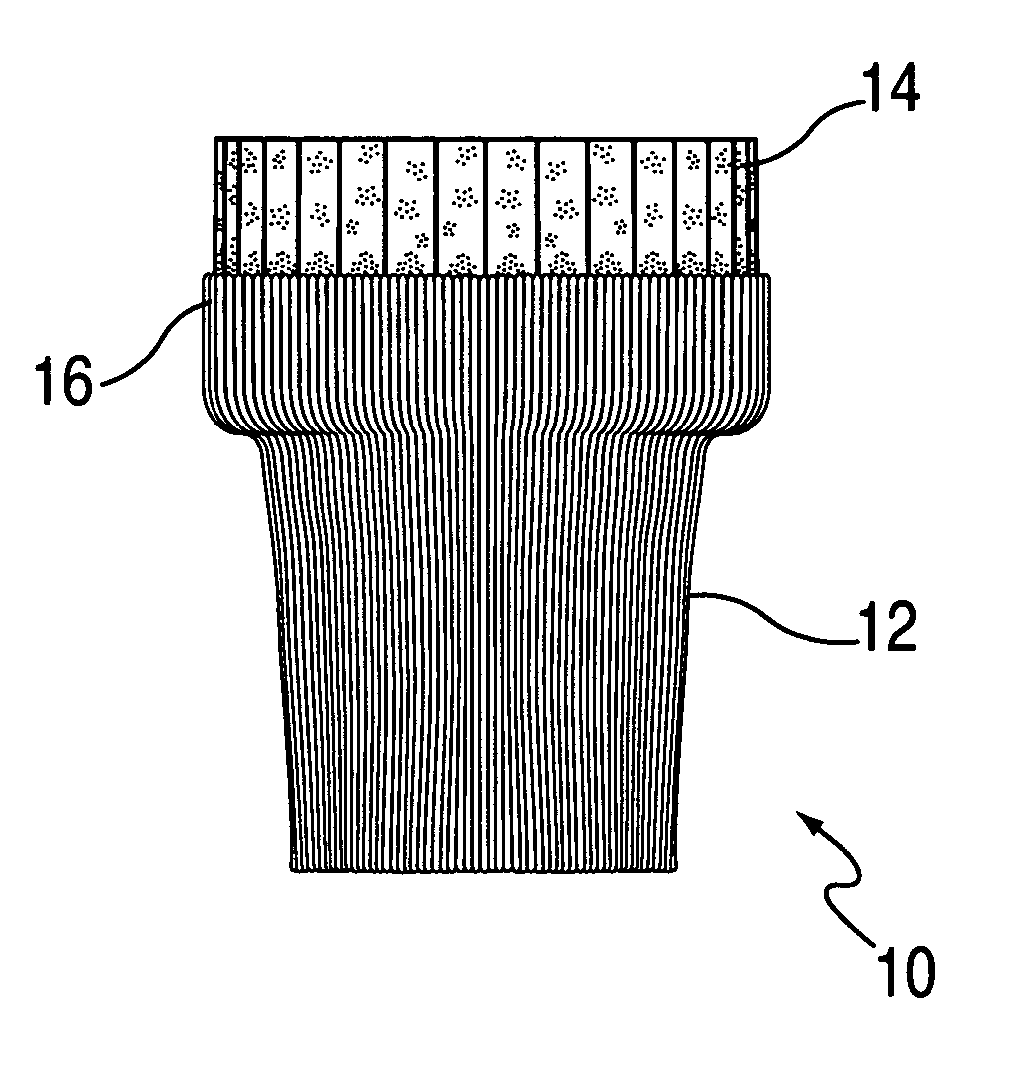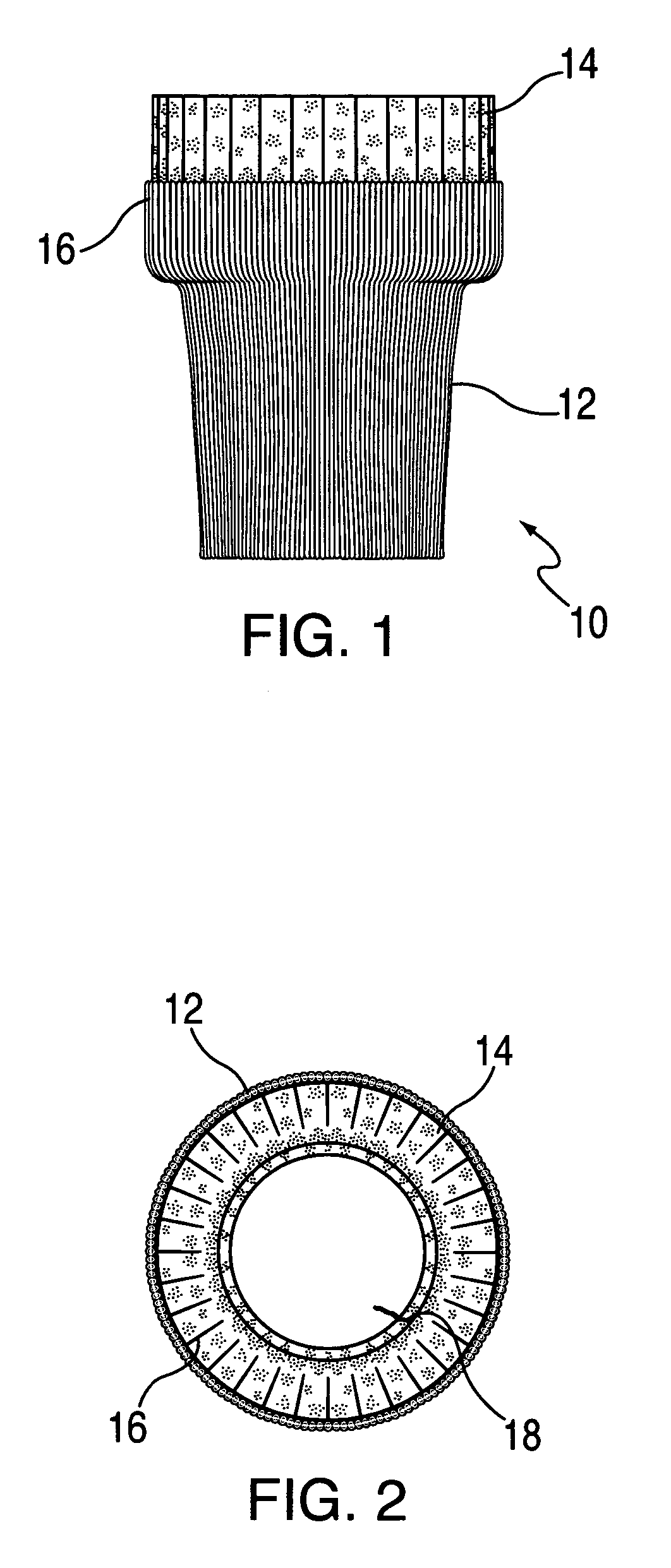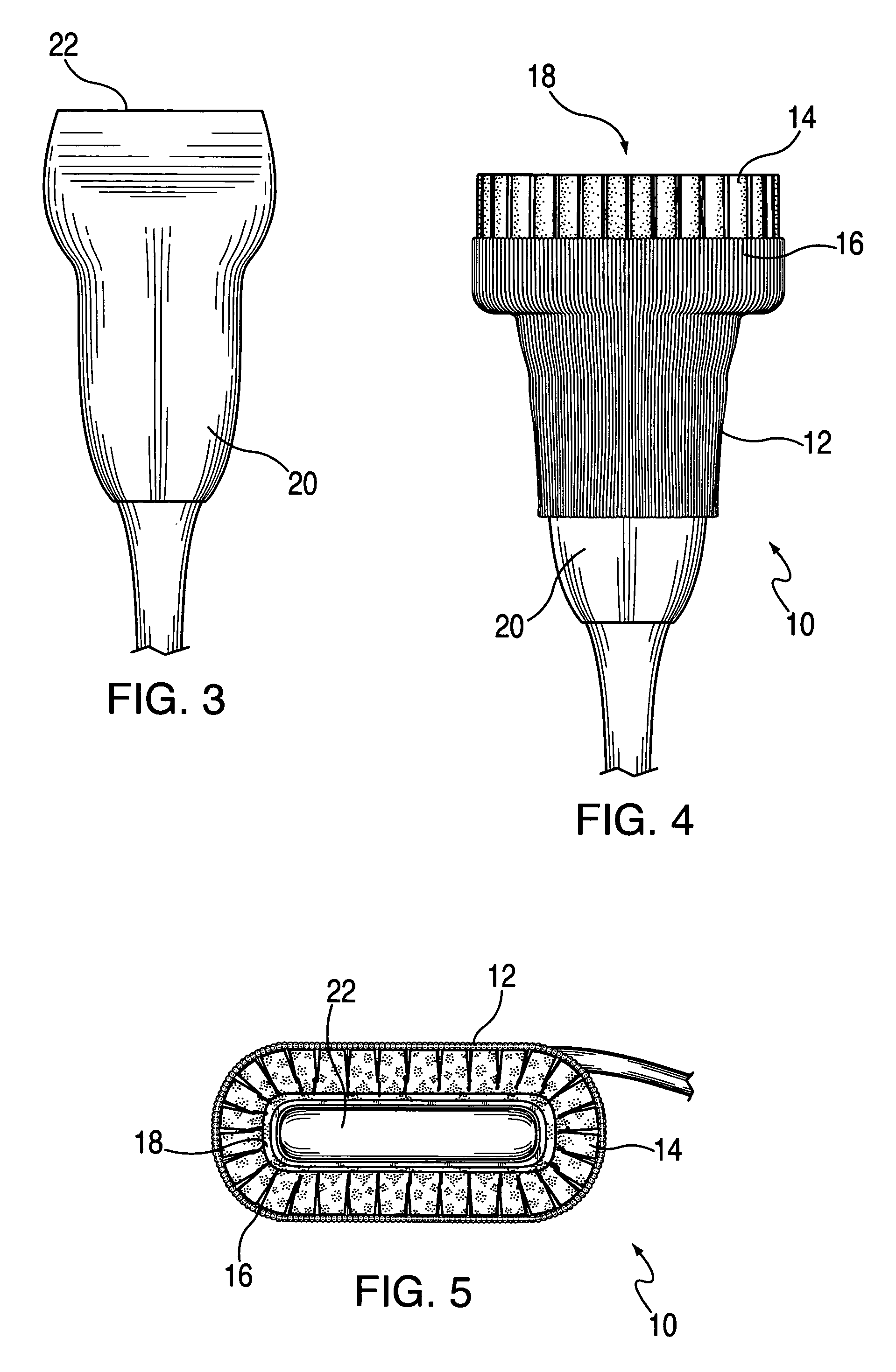Standoff holder and standoff pad for ultrasound probe
- Summary
- Abstract
- Description
- Claims
- Application Information
AI Technical Summary
Benefits of technology
Problems solved by technology
Method used
Image
Examples
Embodiment Construction
—FIG. 1 TO 13
[0044]Referring to FIG. 1, a drawing of multi-ribbed standoff holder 10. Multi-ribbed standoff holder 10 is preferably based on sock 12 which is made of a soft pliable material such as an elastic cloth or rubber sock. Elastic sock 12 when stretched or expanded has memory which will cause it contract and to return to its normal shape when such tension is released. Elastic sock 12 on one end is comprised of solely elastic material and allows for great flexibility with little to no rigidity. As one travels along elastic sock 12 toward its opposite end, elastic sock 12 begins to loose flexibility and increases in rigidity. At the opposite end of elastic sock 12 an expansion collar 14 is comprised of a number of strips of rigid material such as plastic which are incorporated into elastic sock 12. Between these strips of plastic which make up expansion collar 14 areas of plain elastic sock exist providing and forming a number of expansion ribs 16. An expansion rib 16 is found...
PUM
 Login to View More
Login to View More Abstract
Description
Claims
Application Information
 Login to View More
Login to View More - R&D
- Intellectual Property
- Life Sciences
- Materials
- Tech Scout
- Unparalleled Data Quality
- Higher Quality Content
- 60% Fewer Hallucinations
Browse by: Latest US Patents, China's latest patents, Technical Efficacy Thesaurus, Application Domain, Technology Topic, Popular Technical Reports.
© 2025 PatSnap. All rights reserved.Legal|Privacy policy|Modern Slavery Act Transparency Statement|Sitemap|About US| Contact US: help@patsnap.com



